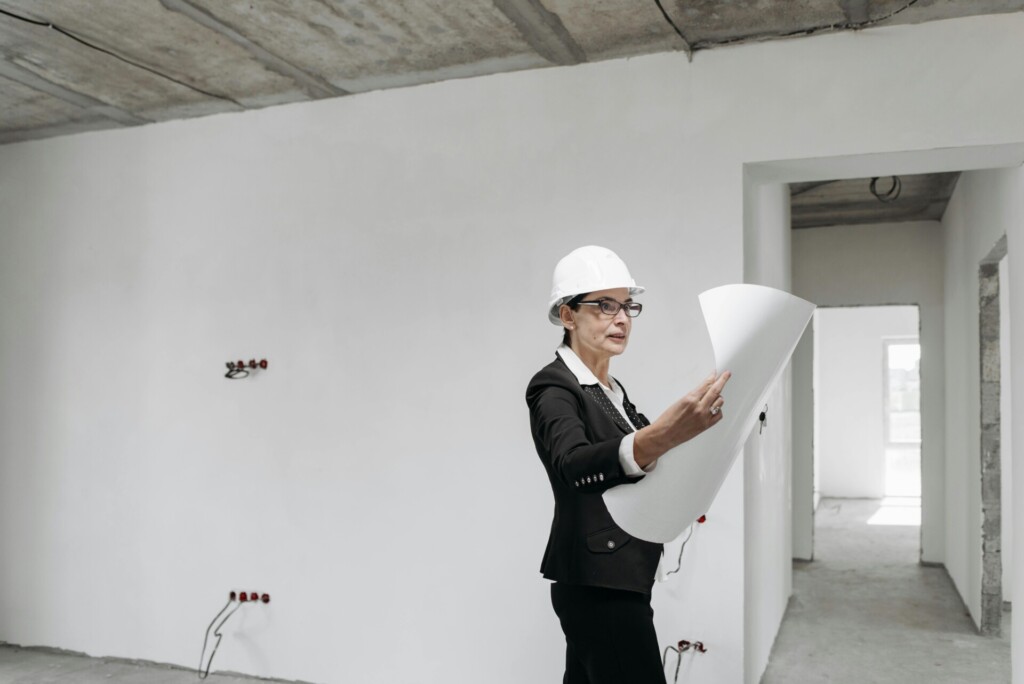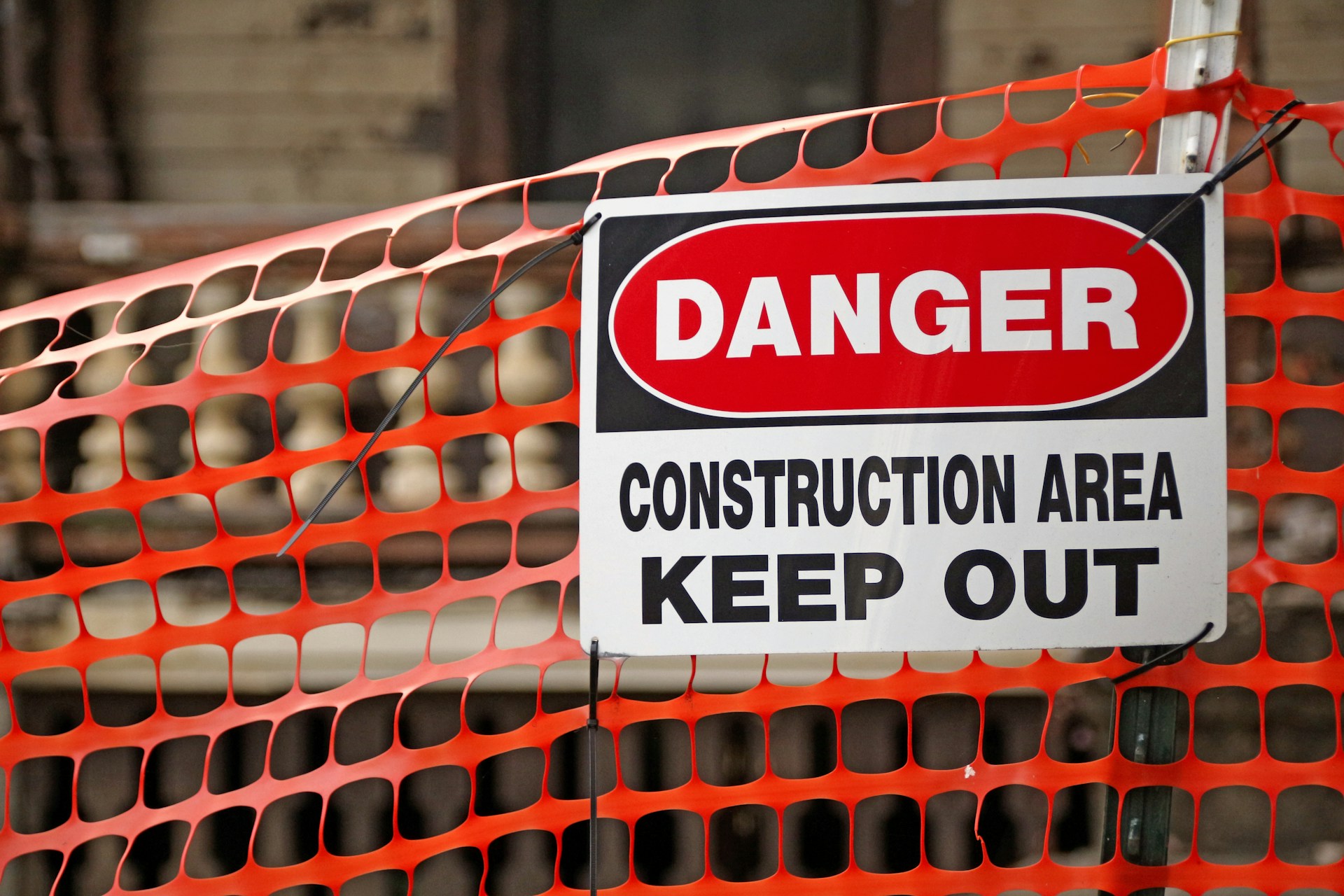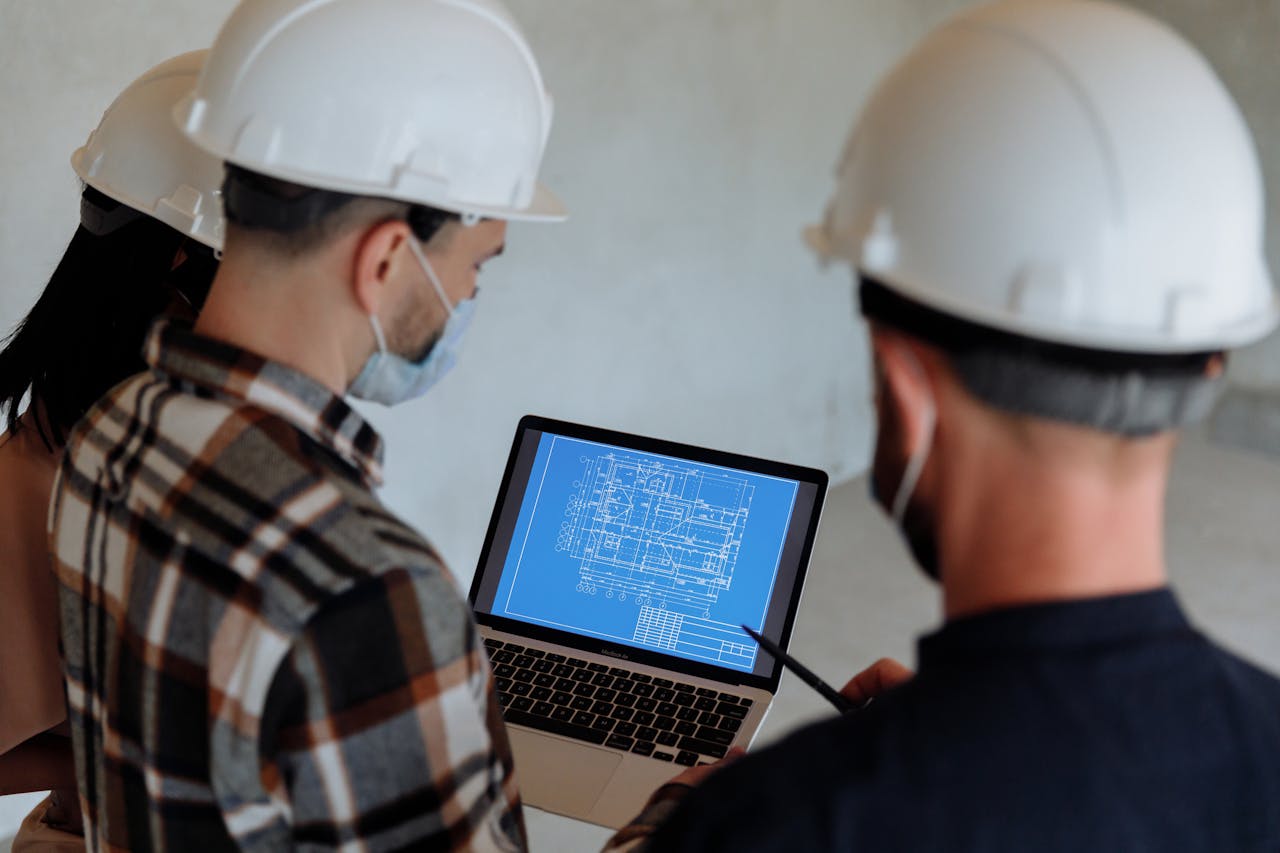Office space demolition and rebuild is a transformative process that revitalizes outdated workplaces. At EB3 Construction, we specialize in selectively removing interior components while preserving the building’s exterior structure. Our team carefully dismantles walls, ceilings, fixtures, and other non-load-bearing elements to create a blank canvas for reimagining your workspace.
This strategic approach allows us to address common challenges of aging offices, from inefficient layouts to worn-out infrastructure. We clear away the old to pave the way for the new, setting the stage for a significant transformation. The rebuild phase is where your vision materializes as we construct a tailored environment aligned with your current business needs and future goals.
By focusing on interior demolition and targeted reconstruction, we deliver modern, functional spaces that enhance productivity and reflect your company’s evolving culture. The end result is more than just an updated office—it’s a revitalized workspace that attracts talent, impresses clients, and positions your business for success in today’s competitive market.
When Should You Consider an Office Demolition and Rebuild?

Several signs indicate it’s time for an office demolition and rebuild. We carefully assess each space to determine if demolition is the right approach. Here are some key indicators that often signal the need for a complete overhaul:
Cramped, Non-Functional Layout
If your workspace feels constrained and hinders productivity, demolition allows us to create a more open, spacious layout. We can remove unnecessary walls and redesign the floor plan to improve flow and functionality. This gives you the opportunity to implement modern office design concepts like flexible workstations and collaborative areas.
Severely Outdated Fixtures and Finishes
When carpeting, lighting, cabinetry, and other interior elements are visibly worn and dated, piecemeal updates often fall short. A full demolition enables us to start fresh with entirely new, high-quality finishes that elevate the entire space. This comprehensive renewal can significantly enhance your office’s aesthetics and functionality.
Repurposing for New Use
Converting traditional closed offices to an open concept collaborative workspace typically requires extensive demolition. We can remove interior walls, drop ceilings, and outdated infrastructure to create a blank canvas for your new vision. This allows for a complete reimagining of how the space functions.
Water or Fire Damage
Offices that have sustained interior damage from flooding, leaks, or fires often require demolition down to the studs. We carefully remove all damaged materials and remediate any lingering issues before rebuilding. This ensures the structural integrity and safety of the space moving forward.
Presence of Hazardous Materials
If testing reveals the presence of asbestos, lead, mold, PCBs, or other hazardous substances, demolition is usually necessary. Our team is equipped to safely remove and dispose of these materials in compliance with regulations. We then rebuild using only safe, modern materials to create a healthy work environment.
While renovation can address some office issues, there are times when starting from scratch through demolition and rebuilding is the most effective solution. We carefully assess each unique situation to determine if demolition is truly warranted before proceeding. Our goal is to create an office space that serves your needs now and well into the future.
What Does the Office Demolition and Rebuild Process Involve?
The office demolition and rebuild process follows several key steps, each crucial for a successful workspace transformation. As general contractors, we coordinate this complex process from start to finish:
Design Discovery and Planning
We begin by defining the project scope and assembling the right team of architects, engineers, and specialists. This phase involves conducting thorough site assessments and producing test fits—detailed floor plans that visualize how the new space will accommodate your company’s needs. These test fits are invaluable for determining the extent of construction required and informing budgeting decisions.
Design Development and Documentation
Once the initial concept is approved, we oversee the creation of detailed construction drawings. These serve as the blueprint for the entire project, specifying everything from structural changes to finishes and systems layouts. Our team ensures these plans comply with all relevant building codes and regulations.
Permitting and Vendor Selection
We handle the often complex permitting process, navigating local requirements to secure all necessary approvals before work begins. Concurrently, we manage the vendor bidding process, vetting and selecting qualified subcontractors for various aspects of the project.
Demolition and Site Preparation
With permits in hand, the physical transformation begins. We carefully demolish existing structures, efficiently remove debris, and prepare the site for rebuilding. This phase requires precise coordination to ensure safety and minimize disruption to neighboring spaces.
Reconstruction
The rebuild phase is where your new office takes shape. Our team oversees the construction of new walls, installation of updated electrical and mechanical systems, and application of finishes according to the approved design. We maintain strict quality control throughout to ensure every detail meets specifications.
Systems and Furnishings Installation
As construction nears completion, we coordinate the installation of technology systems, custom millwork, signage, and furniture. This stage brings the space to life, transforming it from a construction site into a functional office environment.
Final Inspections and Punch List
Before handover, we conduct a thorough punch list walk-through with you and the design team. This process identifies any remaining issues or adjustments needed. Our goal is to address every detail, ensuring the space is perfect before you move in.
Throughout this process, we maintain clear communication with all stakeholders, carefully manage the project timeline, and proactively address any challenges that arise. Our expertise in office demolition and rebuilds allows us to deliver a transformed workspace that meets your vision and supports your company’s future growth.
How Long Does an Office Demolition and Rebuild Take?

The timeline for an office demolition and rebuild varies significantly depending on the original space condition and project scope. As general contractors, we have found that proper planning and project management are crucial to keeping demolition and construction on track.
For a 20,000-square-foot space in shell condition requiring Class A finishes, the entire process typically takes about 32 weeks (8 months) from start to finish:
- Design/architecture: 10 weeks
- Bidding and permitting: 6 weeks
- Construction: 16 weeks
Renovations of second-generation spaces generally progress more quickly. For a similar 20,000-square-foot area, we usually complete the project in about 20 weeks (5 months):
- Design: 6 weeks
- Permitting: 4 weeks
- Construction: 10 weeks
While these timelines provide a general framework, it is important to remember that each project has unique considerations. The permitting process can be unpredictable, particularly in busy jurisdictions, so we always include buffer time to account for potential delays in permit approvals.
During demolition and construction, unforeseen issues, such as hidden structural problems or hazardous materials, can extend timelines. Our experienced project managers work to identify and mitigate these risks early in the process.
The design phase is crucial for keeping the overall project on schedule. We collaborate closely with architects and clients to finalize plans efficiently, allowing us to begin the permitting process as soon as possible. Thorough upfront planning helps minimize changes and delays during construction.
While these estimates offer a general idea, we always develop a customized timeline for each client’s specific project. Factors like building regulations, material availability, and desired finish level all impact the schedule. Our goal is to provide realistic timelines that account for the unique aspects of each office demolition and rebuild.
What Costs Should You Budget for an Office Demolition and Rebuild?
When planning an office demolition and rebuild project, we typically break down costs into several key categories to ensure comprehensive budgeting. As general contractors, we’ve found this approach helps developers and property owners better understand and plan for the full scope of expenses involved.
Hard Costs
Hard costs make up the bulk of most office renovation budgets. These include the physical construction elements such as:
- Demolition of existing structures
- Framing and drywall installation
- Flooring materials and installation
- Mechanical, electrical, and plumbing systems
- Windows and doors
- Roofing (if applicable)
The extent of demolition required can significantly impact this portion of the budget. For a full teardown and rebuild, demolition costs alone typically range from $4 to $8 per square foot, with factors like building size and location influencing the final price.
Soft Costs
Soft costs cover the non-construction expenses essential to project planning and execution:
- Architectural and design services
- Engineering fees
- Permits and inspections
- Legal fees
- Insurance
These costs often account for 15-30% of the total project budget. The complexity of the design and local permitting requirements can significantly influence soft costs.
Vendor Costs
Vendor costs encompass elements that complete the office space:
- Furniture and fixtures
- Signage and branding elements
- IT infrastructure and equipment
- Security systems
While these costs can vary widely based on the specific needs and preferences of the tenant or owner, they typically range from 10-20% of the total budget.
Project Management Fees
As general contractors, we typically charge project management fees ranging from 3-5% of the managed costs. This covers our role in coordinating all aspects of the demolition and rebuild, ensuring the project stays on schedule and within budget.
Contingency Allowance
We always recommend including a contingency allowance to cover unforeseen expenses or changes during the project. For shell spaces, we suggest budgeting 5-10% for contingencies. For more complex remodels or historic buildings, this allowance should be increased to 10% or more of the total budget.
Cost Factors to Consider
Several factors can significantly impact the final cost of an office demolition and rebuild:
- Material selection: High-end finishes will increase costs
- Labor expenses: These vary by region and current market conditions
- Permit fees: These can be substantial, especially in urban areas
- Building codes: Compliance with current regulations may require additional work
- Site conditions: Unexpected issues discovered during demolition can add costs
Average Cost Estimates
While costs can vary widely depending on location and project scope, the 2023 Cumming Group analysis provides some helpful benchmarks:
- Single-story office renovations: Average of $313 per square foot
- Multi-story office buildings: Average of $660 per square foot
It’s important to note that these are national averages, and actual costs can be significantly higher or lower depending on your specific location and project requirements.
| Cost Category | Description | Estimated Range |
| Hard Costs | Includes demolition, framing, drywall, flooring, mechanical, electrical, plumbing, windows, doors, and roofing. | $4 to $8 per sq. ft. for demolition |
| Soft Costs | Covers architectural and design services, engineering fees, permits, inspections, legal fees, and insurance. | 15-30% of total project budget |
| Vendor Costs | Includes furniture, fixtures, signage, branding, IT infrastructure, and security systems. | 10-20% of total budget |
| Project Management Fees | Coordination of all aspects of the demolition and rebuild. | 3-5% of managed costs |
| Contingency Allowance | Additional funds set aside for unforeseen expenses or changes. | 5-10% for shell spaces; 10% or more for complex projects |
Given the complexity of office demolition and rebuild projects, we always recommend working closely with experienced contractors and design professionals to develop a detailed, project-specific budget. This collaborative approach ensures that all potential costs are accounted for and helps minimize surprises as the project progresses.
Disclaimer: Pricing figures are based on publicly available market data and are intended for general estimation purposes as of August 2025. They do not represent a formal quote from EB3 Construction. Actual costs will vary by project scope, location, labor rates, and material prices.
Conclusion: Planning Your Successful Office Demolition and Rebuild

A successful office demolition and rebuild requires careful planning, professional expertise, and attention to detail. By understanding when demolition is necessary, what the process involves, realistic timelines, and comprehensive budget considerations, an outdated office space can be transformed into a modern, functional environment that enhances productivity and reflects your company’s needs.
Engaging experienced professionals—from project managers to architects and contractors—is crucial to manage the complexities of permits, design decisions, and construction challenges. As general contractors, we assemble the right team to oversee all aspects of the demolition and rebuild process, from initial planning through final inspections.
With proper preparation and expert guidance, an office demolition and rebuild project can revitalize your workspace and provide lasting value for your business. The end result is more than just an updated physical space—it’s an opportunity to reimagine how your company operates and create an environment aligned with your long-term goals.
If you’re considering an office demolition and rebuild to transform your workspace, we encourage you to contact EB3 Construction to discuss how we can help bring your vision to life while minimizing disruptions to your operations. Our experienced team is ready to guide you through the entire process and deliver a revitalized office space that propels your business forward.




